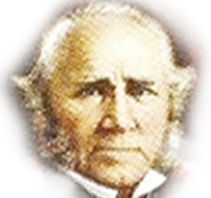Discover Texas
Texas territory has a history of long battles over the exchange of control. Most believe the battle started at the Alamo but the six flags over Texas tell the struggle of the Old World seeking their place in the new land.
Spanish Expedition, 1527: Cabeza de Vaca of Spain becomes shipwrecked along the Texas coast. His Spanish expedition was the first recorded Europeans to penetrate the interior of Texas. Of 242 men, all but four perished. He returns to Spain in 1537 and presents the court with a chronolog of his adventure sympathizing with the natives. He diverts his ill-fated hardship away from the court and reported "the land to be the riches country in the world". His observation aroused many to seek the mysterious land even further. Thus the king grants more expeditions to set sail to the new world spreading Christianity meanwhile oppressing the natives.
LaSalle's French Expedition, 1684: King Louis XIV of France grants Rene-Robert Cavelier, Sieur De LaSalle, one of the most aggressive explorers, permission to settle into the mouth of the Mississippi. In 1684, LaSalle's expedition lands accidentally in what is now Matagorda Bay. Fort St. Louis is established. Obsessed to locate the Mississippi River, he returned on his voyage but meets an early fate when assassinated by one of his men.
The Spanish Discover LaSalle's Settlement, 1689: The Spanish authorities centered in Mexico learn of LaSalle's colonization thus set out to seek and destroy. Upon locating the fort, only a few remains were found. Small-pox or alligator attacks, due to the close proximity of the bay, may have wiped out the small colony.
The Unsettled Spanish in East Tejas: Upon finding LaSalle's empty fort, the Spanish destroy it, move northward and so began the first mission established. Upon completion, priests were expected to take over while most of the commanding army required to move forward. Men left behind were considered "God's grace to help save souls of the heathen".
The settlement failed and lives were lost. It was not until French explorers returned did the Spanish attempt another settlement in 1716. The natives assist in the occupation and are respected for the manner in which "they are loyal to their land" and praised of their "skill for which they construct their houses".
The Spanish missionaries retreat upon the appearance of the French in 1719. Spanish forces push forward and return to the abandoned missions. Through 1767, more missions were erected by the Spanish. New tribes were discovered during this period. The San Saba Mission proved unfavorable. The uneasy Spanish command had difficulty accepting the Apache and particularly the Commanche because "they have no fixed home" for they were "a wandering nation which changes its location with all ease according to necessity and convenience". The Commanche invaded and pillaged the establishment.
In 1765, King Charles III overhauled the plan to establish Spain in the new world and sent General Jose Galvez to make sweeping reform and improve defenses. Meanwhile the Commanche and Apache continued to destroy the remaining missions.
Three areas prove successful for the establishment of Spanish influence were: San Antonio, eastern Tejas, and La Bajia(Goliad). Consensus is recorded by Franciscans of the seminary whom have an established order through spirituality. The strength of the inhabitants included various Indian nations marrying mullatos (offsprings of African and Anglos mixed) and mestizos(native American Indian and Spanish mixed).
The Arrival of the Anglo Immigrant: By 1800, the Anglo immigrated into Tejas territory without the approval of Spanish rule. But upon Napoleon Bonaparte invasion of Spain in 1808, Anglo colonization was welcomed.
By 1810, Mexico struggles on the path for independence from Spain. From this struggle, the Anglos make a move to declare independence from Mexico. However, the movement collapses. Meanwhile, U.S. Secretary of State, James Monroe deploys a special agent to observe the development in Natchitoches. Anglo settlers wanted freedom of European domination and a right to trial by jury among other freedoms granted to U.S. American citizens.
At the center of a peaceful and lawful colonization of Anglos into the Texas territory was Moses Austin and his son, Stephen. In the late 1790s, Moses Austin visited the Spanish government in Louisiana obtaining a grant of land. By 1820, he obtained permission to move 300 families into the new territory. In the winter of 1820, Austin arrived in Texas to explore a suitable area for colonization but fell ill after days without nourishment. By June of the following year, Moses Austin died of lung inflammation. The task to carry out the project was left up to Stephen. By 1822, the settlement was established between the Brazos and Colorado Rivers. Much of the population settled in what is now Fort Bend County. (www.tamu.edu)
Imperial Colonization Law: Anglos were allowed freedoms as long as they were within the new imperial law. One in particular subjected the colonists to Catholicism. Another subjected farmers to economic hardship without the use of slave labor. These were a few of many articles, many settlers were discontent. Following the Austin colonization settlement, the DeWitt colonization was granted. DeWitt offered to bring 400 Catholic families and live in accordance to imperial law. He was granted permission to colonize between the Lavaca and the Guadalupe Rivers. Another colonization led by Hayden Edwards was permitted to settle 800 families in Nacogdoches. Charging families a higher price, his contract was subjected to fraud and was terminated. Resentful, he negotiated a militia with the Cherokee under the Fredonian Rebellion, however, in 1827, it dispersed and Edwards fled for his safety to Louisiana.
By 1828, with the influx of Anglo immigrants, Mexican officials felt the waning of power along the east Texas territory. A newly devised article placed a stop to immigration from the United States.
The Texas Land Company and the Galveston Bay, along with Lorenzo De Zavala and David Burnet and others pooled unofficial grants deliberately sold to newcomers. The new colonists went into uproar with the Mexican government when they learned the land they bought did not belong to them.
The Rise of a Revolution: Over the coming years, on-going unrest eventually led the Convention of 1833. Stephen F. Austin traveled to Mexico to petition the laws under the new dictatorship of Santa Anna as he acquired control. Santa Anna willfully "consented to all requests" except the separation of statehood. Austin, inpatient and irritated, wrote an "unfortunate letter" declaring that colonists would uprise. Austin was arrested and tossed into prison.
As Santa Anna took office the next year, a chain of events created uncertainty, thus a revolution was in the making. Not only did Santa Anna exiled his second in command, but dissolved Congress, and disbanded state legislatures.
In 1836, Santa Anna led an army of 6,000 crossed the Rio Grande to the fall of the Alamo. General Sam Houston led the Texas rebellion and ordered James Bowie to destroy the San Antonio fort and retreat. Defying his orders, he stayed with the defenders. William B Travis wrote an appeal for aid in a letter considered the most heroic appeal in history, "...I shall never surrender or retreat." The massacre at Goliad soon followed. On April 1836, the battle ended the dictators rule, occurred at San Jacinto. ("Documents of Texas History" texashistory.unt.edu)
Tejanos who fought in the Texas Revolution are recognized and credited for their bravery and resistance against oppression and for the birth of Texas Independence.
Jose Antonio Navarro: Signer of the Texas Declaration of Independence
Jose Francisco Ruiz: Signer of the Texas Declaration of Independence
Lorenzo De Zavala: Signer of the Texas Declaration of Independence
The Long Struggle Over Texas Territory
Texas FACTS:
- Early expeditions would not have been successful without the guidance of natives into rough and unchartered territory.
- Maize (indian corn) was the main source of survival food for the early Spanish explorers.
- Sam Houston was baptized Catholic under the name Samuel Pablo.
Early exploration of Texas territory was made by the Spaniards, Cabeza De Vaca and Coronado(Spanish Flag), in the early 1500s but the first short-lived colony planted on Matagorda Bay was led by explorer Sieur de la Salle(French Flag). By the late 1600s, the Spanish returned establishing missions-the first settlement Ysleta Mission, (Ysleta, Texas) military posts, and way of life. Throughout the 1700s, conditions for colonization were favorable under Spanish rule. Meanwhile, the Louisiana territory was settled by French occupation and with its Spanish neighbors in Tejas territory, a stronghold against British forces was soon developed. By the turn of the 1800s, the United States purchased Louisiana from the French meanwhile Anglos begin to settle in Tejas territory ruled by the Mexican government(Mexican Flag).
By 1845, Texicans has established a republic after fighting for independence against the Mexican government(Texas Republic Flag). Sixteen years after Texas had joined the union, civil war caused a division of many states. Governor Sam Houston urged Texans to remain neutral but soon was driven from office. Texas joined forces with the doomed south and remained under the Confederate Flag until the end of the civil war.
Texas returned under the U.S. Flag and reconstruction begin. The discovery of black gold sprouted soon after thus began the development of a self-reliant economic stronghold.
Six Flags Over Texas
Bet you didn't know: Texas facts presented by History.com
Roadside Texas presents the rich heritage of the state of Texas. Visit missions and forts that paved the way, spectacular museums that tell the story, and relive the past through historical adventures.
Sam Houston elected President of Texas, 1836.
Relive Texas History






